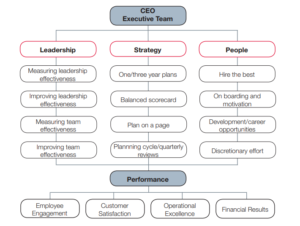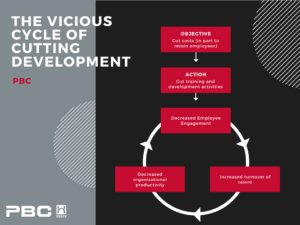To say that these are interesting times that we are living in is an understatement.
Over the past couple of weeks, we have seen panic-buying at supermarkets; a rout on global stock markets; racism and bigotry rearing their ugly heads; all coupled with a disturbing lack of leadership by many of our global leaders during trying and uncertain times.
It has been said that “People can deal with bad news better than they can deal with uncertainty." I agree with this, and believe that during times of uncertainty – such as the current COVID-19 pandemic – the role of effective leadership becomes even more critical.
Role Modelling
At any point in time leaders need to be role models for the behaviours they expect to see in others. They need to ‘walk the walk,' not just ‘talk the talk.' While we have seen strong and responsible leadership from some global leaders, we have also seen others downplay the risk of the virus; refuse for many days to be tested; and continue to shake people’s hands despite having been in contact with others who have tested positive for COVID-19 - in direct contrast to what was being stated as best practice behaviour.
Such open displays of hypocrisy can undermine our faith in leadership at the national level. At a corporate level, I am hopeful that the captains of business will be better role models. After all, year after year, data from employee engagement show us that senior leaders play a critical role in driving both employee engagement and shareholder returns (Aon Hewitt, Best Employers Insights).
LEAP Model
At Peter Berry Consultancy we have a model that links leadership to organisational performance. Called the LEAP model, the underlying premise is that Leadership drives Engagement And Performance, as outlined in Figure 1 below. To enable high performance to occur, leaders need to be mindful that they ensure an alignment between their behaviours, strategy, and employees to enable optimal outcomes.
Figure 1: LEAP Model

It is well known that the higher you climb on the corporate ladder, the more visible you become.
In times of uncertainty, organisational leaders need to have a heightened awareness that their words and actions are being scrutinised by employees far more closely than usual. They need to ensure that they communicate and behave in ways that align with their desired end goals. The performance goals outlined in the LEAP model are aligned with the Balanced Scorecard approach. Lagging indicators such as Customer Satisfaction and Financial Results are impacted by the leading indicators of Employee Engagement and Operational Excellence. In times of crisis, where the focus turns logically to the financial results (a lagging indicator), it is important for leaders to remember the leading indicators - especially their employees. They are the ones who will deliver results and add value and their engagement and will have a direct (leading) impact on those critical lagging indicators.
During an economic downturn (I won’t use the “R” word just yet), past experience shows us that a fairly normal pattern of behaviour emerges within an organisation. This can best be described as a ‘batten down the hatches’ mentality, where the organisation focuses on managing costs to the best of their ability to retain market share, customers, and profitability. While such an approach is perfectly understandable, leaders need to be mindful of the unintended consequences such an approach can have. A focus on “protecting the bottom line at all costs” can end up being a costly exercise.
The Downside of Cutting Leadership Development
In almost all employee engagement surveys I have conducted or reviewed over the past 20+ years, one of the most important factors that positively impacts employee engagement is Career Development. This is substantiated by research undertaken by Bob Nelson, whose analysis of millions of employees found career development to be the second most impactful dimension on employee engagement (Nelson, 2018).
Much has also been written about the Future of Work, the impact of Artificial Intelligence and the fact that many current roles will not exist in the future (Muro et al, 2019). As a result of these impending changes employees will need to re-skill to remain relevant.
A business downturn provides a perfect opportunity for an organisation to identify, assess, and invest in their talent.
Deloitte in 2015 summarised the value of ongoing development nicely:

Unfortunately, the reality is often that one of the first areas to be cut or deferred during a crisis or economic downturn is assessment, training, and development. The challenge with adopting a “cutting” approach is that it risks creating an unintended negative impact – especially if the downturn is prolonged, as will likely be the case for COVID-19. Decreasing training and development can lead to decreased engagement; the loss of top talent who are poached by more aggressive competitors, resulting in decreased productivity which then creates a vicious cycle as shown in Figure 2.
Figure 2: The Vicious Cycle of Cutting Development

Organisations that on the other hand “boost” their career development, including training and development efforts during a downturn, are perceived more favourably by employees. Morale is higher, retention is higher, and attraction of young talent is higher (Ahluwalia, 2016).
History shows that in the first few months in an upturn, hiring quickly becomes a critical issue. When the economy turns around, the costs of adopting a cutting approach include the need to re-hire and re-train talent that left, resulting in a slower ability to return to pre-crisis conditions. This is more prominent for those companies that have lost good talent.
The cost of hiring and training a staff member to be fully productive is generally agreed to be in the range of 0.5 – 2.5 x annual salary depending on the complexity and seniority of the role (Cascio, 2006). Organisations need to determine if it is a better option to save on these hiring costs by instead investing in nurturing the skills and talent of existing employees.
I would suggest retaining and investing is a better approach than cutting and re-hiring.
Next Steps
So what can organisations do to manage the requirements of the business while simultaneously maintaining an engaged workforce?
Here are some suggestions for consideration:
- Avoid death by 1,000 cuts. If you need to make cuts to headcount to maintain business viability, do it early and cut once. Invest aggressively in the remaining staff.
- Don’t communicate that training is to be frozen/cut. Manage the internal communications toward a shift in emphasis to applied learning. Re-orient training initiatives to internal project-based work that will support the business. This has the added value of keeping talent engaged in the business.
- Decrease spending on external facilitators where possible. Leverage internal resources instead. Where required (e.g. when debriefing candidates on psychometric assessment results) invest in up-skilling internal resources through certifications so they can undertake the debriefs
- Don’t neglect your top talent. They are generally the ones on the radars of competitors. Continue to invest differentially in them. 360 feedback is a valuable source of developmental information which can be collected and debriefed online.
- Re-examine the delivery medium. While there are many benefits to face-to-face training and meetings, this medium carries with it the risk of a contagion effect. Explore alternate means of up-skilling staff (e.g. leveraging interactive technology based solutions; limiting the size of group interactions).
Lastly, don’t forget to ask your employees for their ideas on how to manage costs/ increase revenues. They have a vested interest in the business and, being closer to the ground, often have unique and innovative approaches that can help ensure the success of the business. Soliciting employee input helps ensure buy-in, both now as well as when the downturn finishes and the organisation is going through the recovery period.
*This is a guest post provided by the team at Peter Berry Consultancy.
About PBC Assessments
PBC is a multidisciplinary global consulting firm with 30 years of experience in the delivery of solutions aimed at maximising the potential of individuals, teams, leaders, and organisations. We undertake research to support our evidence-based solutions and have a network of partners and distributors globally.
References:
Essays, UK. (November 2018). Training During the Current Global Recession
Bob Nelson (2018) 1001 ways to engage employees – help people do better what they do best (Career Press)
Wayne Cascio (2006), The high cost of low wages (Harvard Business Review)
Divya Ahluwalia (2016) Learning and Development in a downturn economy: The Key to Success, Templar Advisory
Aon Hewitt (2018) Aon Best Employers Insights
Deloitte (2015) Human Capital Trends
Walter Frick (2019), How to survive a recession and thrive afterwards (Harvard Business Review)